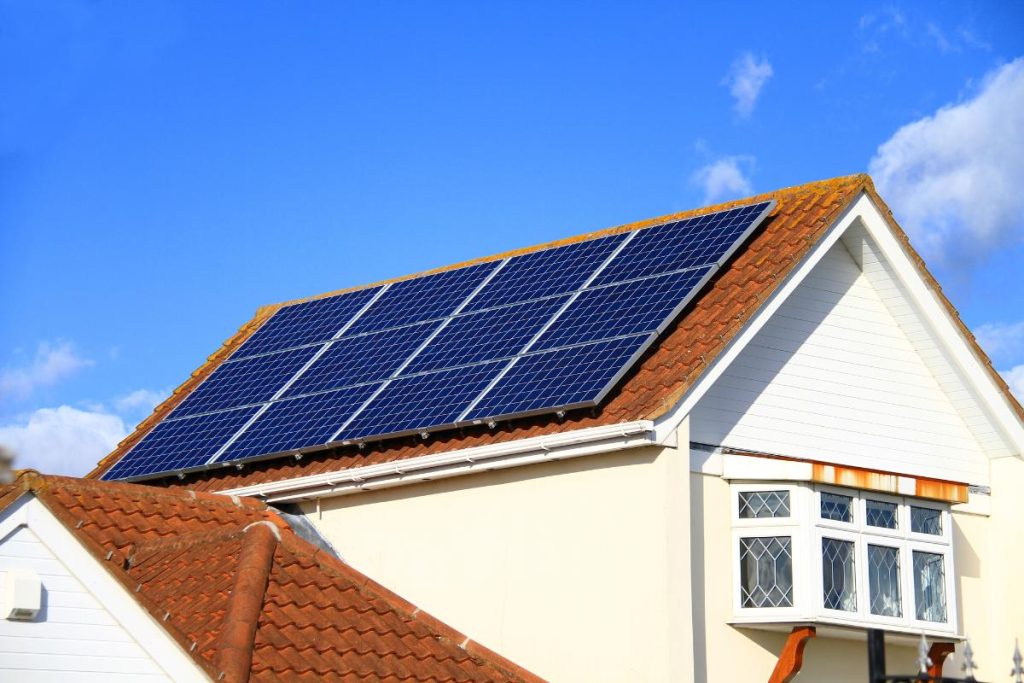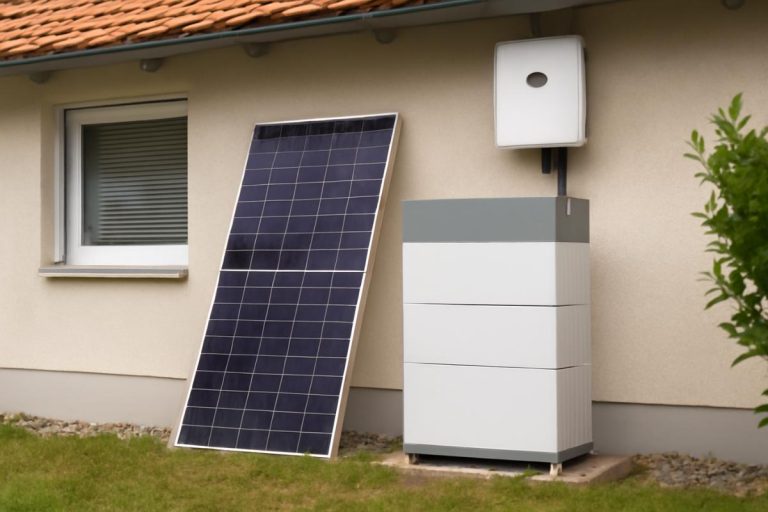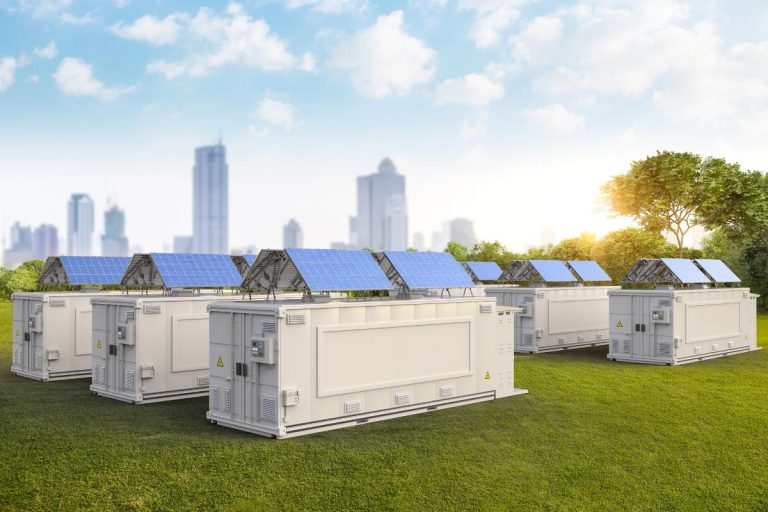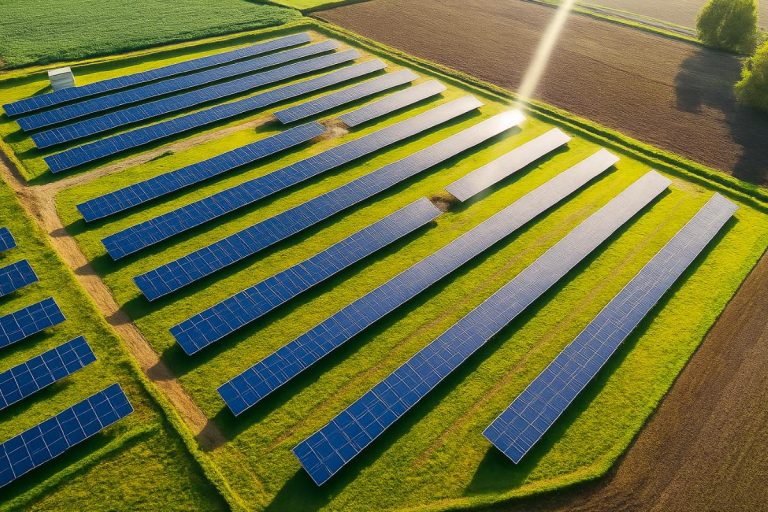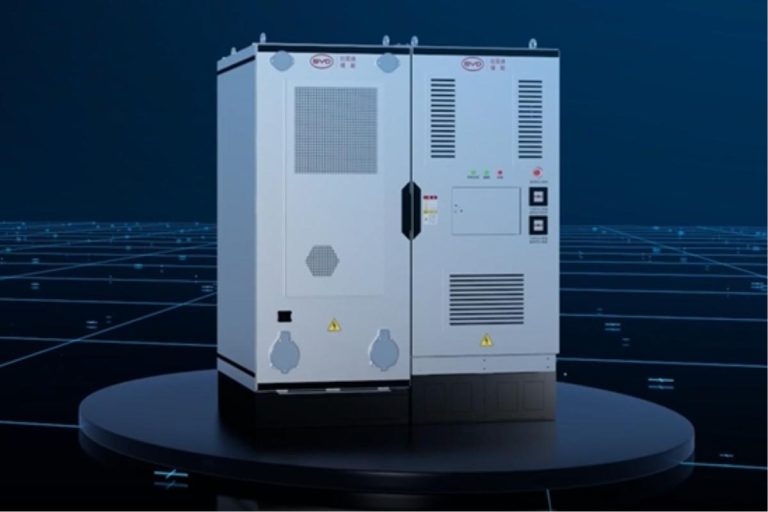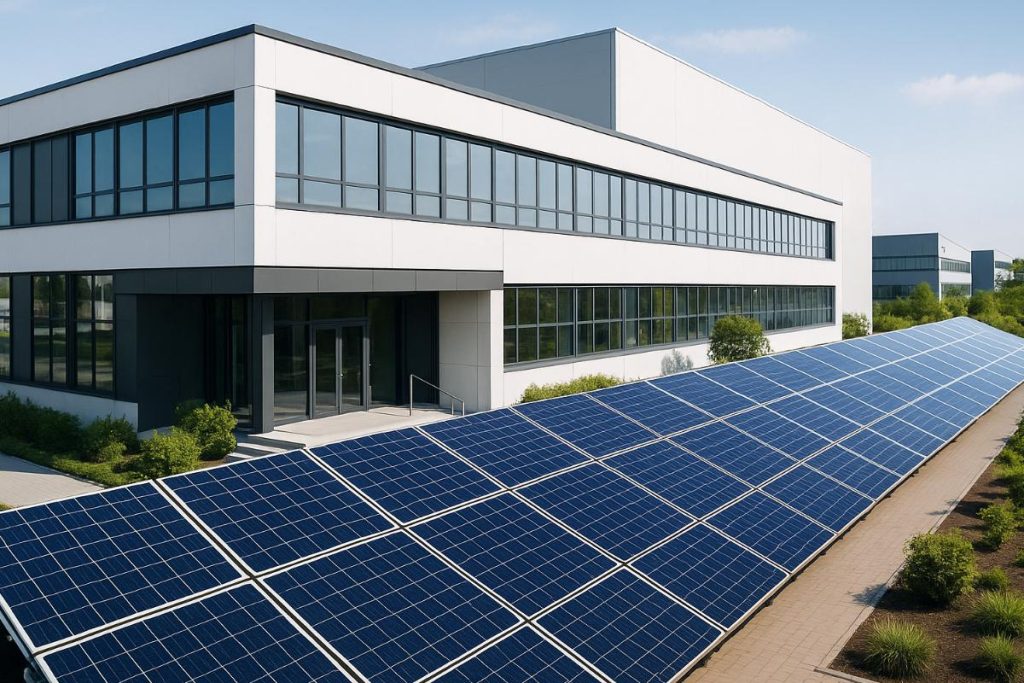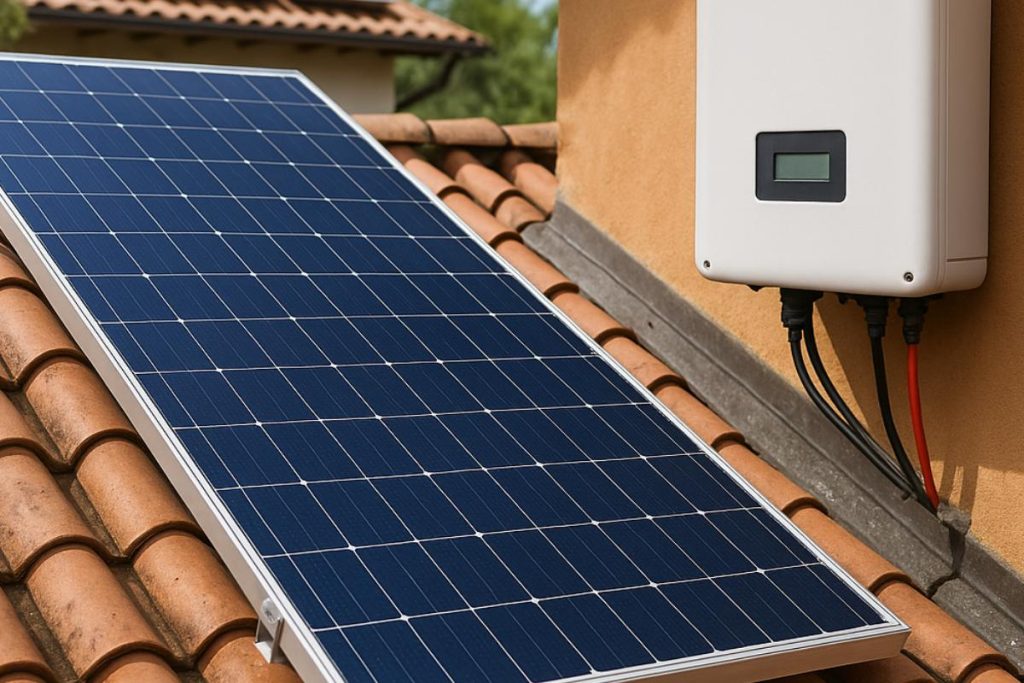Solar energy is becoming increasingly popular in Brazil, and it's not hard to see why. As well as being a clean and renewable source of energy, it can generate significant savings on electricity bills. But one of the most common doubts among those thinking of adopting this technology is: how many solar panels do I need to generate 1000 kWh?
In this comprehensive guide, we'll explain everything you need to know to calculate the number of solar panels you need, taking into account factors such as energy consumption, solar irradiation and panel efficiency. Let's go?
How many solar panels do I need to generate 1000 kWh?
Approximately 17 400W solar panels are needed to generate 1000 kWh. The formula for understanding this calculation can be found throughout this article.
This is because the answer to this question depends on several factors, such as the power of the solar panels, the amount of sunlight available in your region and the efficiency of the system.
On average, between 10 and 15 solar panels are needed to generate 1000 kWh per month, considering panels from 400W to 550W. However, this number can vary depending on the specific conditions of the location where the system will be installed.
To understand this better, let's take a closer look at how this calculation is made and what factors influence the result.
How to calculate the number of solar panels
Calculating the number of solar panels needed to generate 1000 kWh involves three main steps:
Step 1: Determine energy consumption
The first step is to find out how much energy you consume each month. In the case of this guide, we are already considering a consumption of 1000 kWh per month. If you don't know your consumption, just check your electricity bill, where this information is detailed.
Step 2: Check the solar irradiation of the region
Solar irradiation is the amount of solar energy that falls on a given area over a period of time. In Brazil, the average solar irradiation varies between 4 and 6 kWh/m² per day, depending on the region. For example, in the Northeast, irradiation is higher, while in the South it can be slightly lower.
This information is crucial, as it defines how much energy your solar panels can generate. You can consult solar irradiation maps or use online tools to find out the exact value for your region.
Step 3: Choose the power of the solar panels
Solar panels have different power ratings, which generally vary between 300W and 550W. The higher the power, the fewer plates you need to generate the same amount of energy. For example, a 400W plate generates more energy than a 300W one, while taking up the same amount of space.
Formula for calculating the number of solar panels
Now that you have the necessary information, we can use the following formula to calculate the number of solar panels:
Number of panels = Monthly consumption (kWh)Solar irradiation (kWh/m2/day) x Day of the month x Panel power (kW)
Practical example
Let's say you live in a region with an average solar irradiation of 5 kWh/m² per day and you want to generate 1000 kWh per month using 400W (0.4 kW) panels.
- Monthly consumption: 1000 kWh
- Solar irradiation: 5 kWh/m²/day
- Days in the month: 30
- Plate power: 0.4 kW
Applying the formula:
Number of plates = 10005 x 30 x 0.4 = 100060 = 16.66
In other words, you would need approximately 17 400W solar panels to generate 1000 kWh per month in this region.
See how much does solar energy cost.
Factors influencing the calculation
In addition to the factors already mentioned, other aspects can influence the number of solar panels required. Let's take a closer look at the main ones:
Plate efficiency
The efficiency of a solar panel refers to its ability to convert sunlight into electrical energy. More efficient panels generate more energy with the same amount of light. Therefore, investing in high-efficiency panels can reduce the number needed.
Orientation and inclination
The orientation (north, south, east, west) and inclination of the solar panels directly affect the amount of light they receive. In Brazil, the ideal orientation is towards the north, with an inclination close to the local latitude.
Shading
Trees, buildings or any obstacle that causes shading can reduce the system's efficiency. That's why it's important to install the panels in a place with good exposure to the sun during the day.
And when it gets dark? Understand how solar energy works at night!
Maintenance: dirty or damaged panels generate less energy
Dirty or damaged solar panels can lose efficiency. That's why it's essential to carry out regular maintenance to ensure that the system runs at peak performance.
Check out our full content on how solar energy works.
Number of license plates per region of Brazil
The number of solar panels required can vary significantly depending on the region of Brazil. Here are some examples:
- Northeast: With high solar irradiation (5.5 to 6 kWh/m²/day), around 14 400W panels are needed to generate 1000 kWh/month.
- Southeast: With an average irradiation of 5 kWh/m²/day, around 16 400W panels are needed.
- South: With lower irradiation (4 to 4.5 kWh/m²/day), up to 18 400W panels may be needed.
Final tips
Now that you know how to calculate the number of solar panels needed to generate 1000 kWh and know the factors that influence this calculation, it's time to check out some practical tips to ensure that your photovoltaic system is efficient, durable and economical. These guidelines will help you make more assertive decisions and make the most of solar energy. Let's go?
Use online solar calculators
To make the calculation easier, you can use solar calculators available on the internet. These tools take into account factors such as energy consumption, solar irradiation and the power of the plates to provide an accurate estimate.
Prioritize certified brands
Investing in solar panels from recognized and certified brands is essential to guarantee the quality and durability of the system. BYD, for example, is one of the world leaders in photovoltaic technology, offering highly efficient and reliable solar panels.
Consider the space available
Before installing the system, check that you have enough space on your roof or land to accommodate all the solar panels you need. More powerful panels can help save space.
Discover BYD photovoltaic kits
BYD is a company recognized globally for its innovative technology and commitment to sustainability. Its dream is in line with what humanity needs: to change our dependence on non-renewable energy to clean energy sources. BYD's photovoltaic energy solutions are applied to small, medium and large projects, serving homes, businesses, industries, rural properties and even energy concessionaires.
With highly efficient and durable solar panels, BYD is an excellent choice for anyone looking for a reliable, high-performance photovoltaic system. In addition, the company offers specialized technical support and an extended warranty, guaranteeing peace of mind and security for its customers.
Find the photovoltaic kit BYD is right for you!

